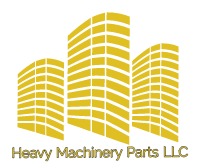Don’t let their size fool you. Compact tractors are proving to be incredibly versatile workhorses, offering a powerful and efficient solution to a wide array of tasks across various industries. From maintaining sprawling estates to tackling demanding landscaping projects and even assisting in agricultural operations, these nimble machines are punching above their weight. This article delves into the world of compact tractors, exploring their diverse applications, the compelling advantages they offer, their potential drawbacks, and providing a clear comparison to help you understand their capabilities.
What Are Compact Tractors Used For?
Compact tractors bridge the gap between lawnmowers and full-sized agricultural tractors, offering a blend of maneuverability and power. Their versatility stems from the wide range of attachments and implements they can accommodate. Here are some key applications:
- Landscaping and Grounds Maintenance: Mowing large lawns, tilling gardens, cultivating flower beds, spreading mulch, aerating turf, and removing debris are common tasks.
- Small-Scale Farming and Hobby Farming: Plowing, tilling, planting, cultivating, spraying, and harvesting on smaller acreage.
- Property Maintenance: Moving materials with a front-end loader, digging with a backhoe attachment, grading driveways, clearing snow, and managing wooded areas.
- Construction and Light Industrial Work: Some models can be used for light excavation, material handling on job sites, and operating specialized attachments.
- Municipal and Estate Management: Maintaining parks, sports fields, and large private properties.
Don’t forget, we also offer a wide range of spare parts for heavy machinery, so feel free to inquire about any replacement needs you may have. Just click on contact us.
Advantages of Compact Tractors
The growing popularity of compact tractors is driven by a compelling set of advantages:
- Versatility: The ability to use numerous attachments makes them incredibly adaptable for a wide range of tasks, eliminating the need for multiple specialized machines.
- Maneuverability: Their smaller size and tighter turning radius allow them to operate effectively in confined spaces where larger tractors struggle.
- Ease of Use: Generally, compact tractors are simpler to operate and maintain compared to their larger counterparts, making them accessible to a broader range of users.
- Lower Initial Cost: Compared to full-sized agricultural or construction tractors, compact models typically have a significantly lower purchase price.
- Fuel Efficiency: Their smaller engines generally consume less fuel, leading to lower operating costs over time.
- Storage: Their compact dimensions make them easier to store in garages, sheds, or barns.
- Reduced Ground Compaction: Their lighter weight compared to larger tractors minimizes soil compaction, which is beneficial for lawns and gardens.
Disadvantages of Compact Tractors
While compact tractors offer numerous benefits, it’s important to consider their limitations:
- Lower Power Output: Compared to larger tractors, they have less horsepower and lifting capacity, limiting their ability to handle very heavy implements or demanding tasks.
- Smaller Implement Size: The size and capacity of the attachments they can effectively operate are limited by their power and hydraulic capabilities.
- Slower Working Speed for Large Areas: Covering very large fields or properties can take longer compared to using larger, more powerful equipment.
- Less Comfortable for Extended Use: Basic models may lack some of the comfort features found in larger tractors, which can be a factor for operators working long hours.
- Limited Traction in Extreme Conditions: While many offer four-wheel drive, their lighter weight can sometimes limit traction in very muddy or steep terrain compared to heavier machines.
Comparative Table of Compact Tractors vs. Larger Tractors
| Feature | Compact Tractors | Larger Tractors |
|---|---|---|
| Size & Weight | Smaller, Lighter | Larger, Heavier |
| Power (HP) | Typically lower (20-60 HP range) | Typically higher (60+ HP) |
| Maneuverability | Excellent | Good, but less agile |
| Versatility | High (due to numerous attachments) | High (for specific agricultural/construction tasks) |
| Initial Cost | Lower | Higher |
| Operating Cost | Generally lower (fuel, maintenance) | Generally higher |
| Ease of Use | Generally easier | More complex |
| Implement Size | Smaller, lighter implements | Larger, heavier implements |
| Working Speed (Large Areas) | Slower | Faster |
| Ground Compaction | Lower | Higher |
| Comfort | Can be basic on some models | Often more comfortable features |
| Traction (Extreme Conditions) | Can be limited by weight | Generally better due to weight |
| Primary Use Cases | Landscaping, small farming, property maintenance | Large-scale agriculture, heavy construction |
Compact tractors represent a smart and efficient solution for a multitude of tasks that don’t necessarily require the immense power and size of larger machinery. Their versatility, ease of use, and lower costs make them an attractive option for homeowners, small farmers, landscapers, and property managers alike. While they have limitations in terms of sheer power and capacity, their ability to tackle a wide range of “big problems” in a “small” and manageable package ensures their continued popularity and growing presence across various industries.
